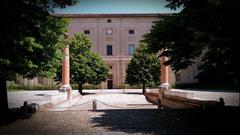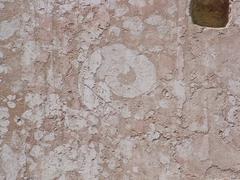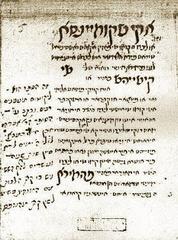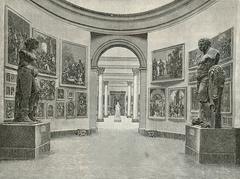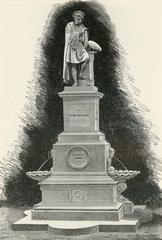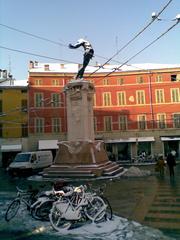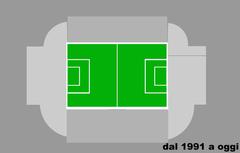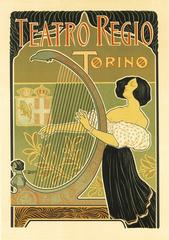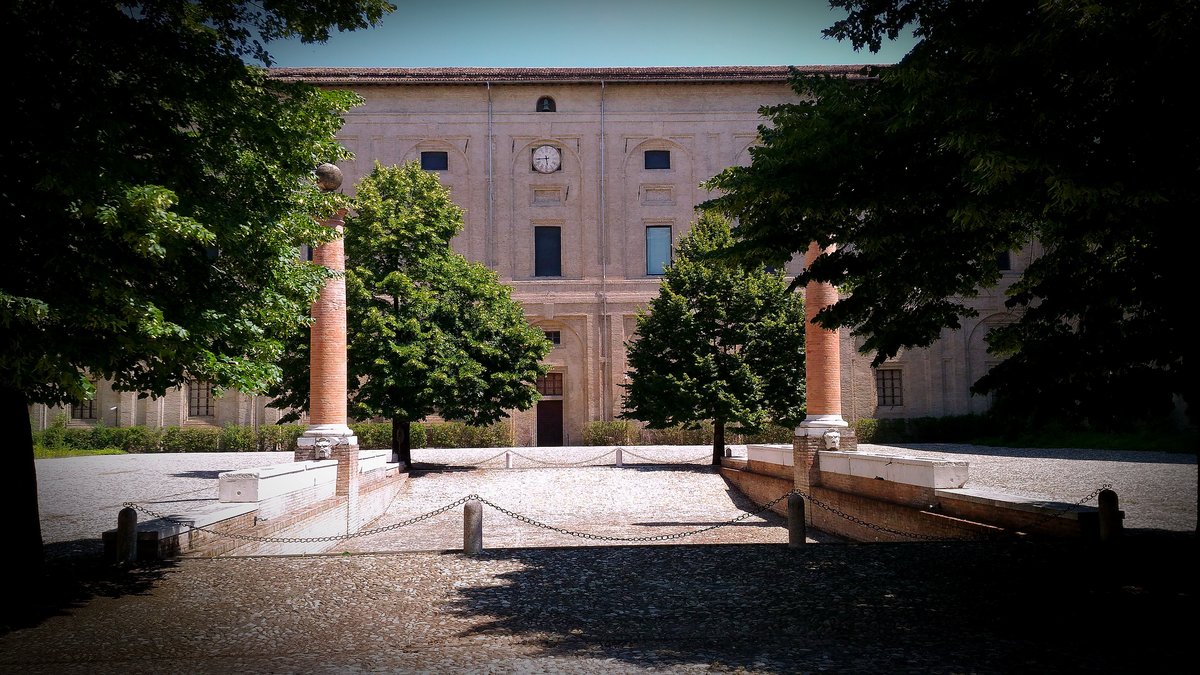
Palazzo della Pilotta: Visiting Hours, Tickets, and Parma Historical Sites Guide
Date: 15/06/2025
Introduction
Situated in the heart of Parma, Italy, the Palazzo della Pilotta is a monumental complex that reflects centuries of artistic and cultural heritage. Its name recalls the Spanish ball game “pelota,” once played in its courtyards, and its origins are intertwined with the ambitions of the powerful Farnese family. Today, the Palazzo stands as a vibrant cultural hub, home to some of Italy’s most significant museums, libraries, and theaters. Whether you are seeking current visiting hours, ticket details, or a deeper understanding of Parma’s historical sites, this guide provides comprehensive information and practical tips to enrich your experience (dong.world; the-past.com; Google Arts & Culture; Lonely Planet).
Historical Background
Origins and Construction
Commissioned in the late 16th century under Duke Ottavio Farnese, the Palazzo della Pilotta was intended as an extension of the Farnese family’s main residence and as a symbol of ducal power. Its name, “Pilotta,” pays homage to the ball game once played by Spanish soldiers in its courtyards. The initial construction featured monumental brickwork, interconnected buildings, and vast courtyards, establishing the palace as a multifunctional center for administration, armory storage, and courtly pursuits (the-past.com).
Architectural Evolution
Throughout the 17th and 18th centuries, the palace underwent significant expansions, including the creation of the Biblioteca Palatina in 1649 and the addition of the painting gallery in 1662. The Teatro Farnese—a masterpiece of Baroque wooden theater design—was constructed between 1618 and 1619. Later, under the patronage of Duchess Marie Louise, the complex saw further refurbishments and the establishment of new exhibition halls (dong.world). Despite wartime damage in the 20th century, careful restoration has preserved its historical and architectural grandeur (Visit-Parma.com).
Cultural Significance
The Palazzo della Pilotta became a bastion of culture, knowledge, and the arts under the stewardship of the Farnese family. It housed prestigious collections of paintings, sculptures, rare books, and antiquities—many of which remain or have been repatriated. Over time, the palace evolved into a complex of museums and institutions that collectively narrate Parma’s journey through the Renaissance, the Enlightenment, and into the modern era (Google Arts & Culture).
Main Attractions
Teatro Farnese
Constructed in 1618 and renowned as one of the few surviving Baroque wooden theaters, the Teatro Farnese boasts a vast horseshoe-shaped auditorium and ingenious stage machinery. Severely damaged during World War II, it was meticulously restored and now stands as a testament to early modern performance architecture (Lonely Planet; Our Escape Clause). The theater is accessible with a Pilotta complex ticket and is an essential stop for visitors interested in the performing arts.
Galleria Nazionale di Parma (National Gallery)
The National Gallery presents a remarkable collection of Italian art from the Middle Ages to the 20th century. Key highlights include Correggio’s “Madonna of St. Jerome,” Parmigianino’s “Turkish Slave,” and Leonardo da Vinci’s “La Scapigliata.” Works by Canaletto, Tintoretto, Van Dyck, and El Greco also feature prominently, providing visitors with a comprehensive survey of Italy’s artistic evolution (Google Arts & Culture; Nannybag Guide).
Museo Archeologico Nazionale (National Archaeological Museum)
Founded in 1760, the National Archaeological Museum holds an extensive collection of artifacts from prehistoric, Etruscan, Roman, and medieval periods. Noteworthy exhibits include Roman mosaics, funerary steles, coins, and the Tabula Alimentaria, a unique Roman bronze tablet (Wikipedia).
Biblioteca Palatina (Palatine Library)
Founded in 1769, the Palatine Library is a sanctuary for scholars, housing over 800,000 volumes, including rare manuscripts and early printed books. Its frescoed reading rooms and rotating exhibitions offer a glimpse into Parma’s intellectual legacy (Wikipedia).
Museo Bodoniano
This museum is dedicated to the renowned typographer Giambattista Bodoni. It preserves original printing presses, typefaces, and editions, celebrating Parma’s contribution to the art of publishing (Our Italian Journey).
The Courtyards
The palace is organized around three main courtyards: Cortile della Pilotta, Cortile del Guazzatoio, and Cortile della Racchetta. These open spaces provide architectural interest and are often used for cultural events (Wikipedia).
Visitor Information
Location and Accessibility
Address: Piazza della Pilotta, 3, 43121 Parma PR, Italy. The palace is a short walk from Parma’s central train station and is well-served by local buses (Italia.it). Parking in the historic center is limited, so public transport is recommended.
Opening Hours
- Tuesday to Sunday: 9:00 am – 7:00 pm (last entry typically one hour before closing)
- Closed: Mondays and certain holidays (verify on the official website)
Tickets
- General Admission: Approximately €18 per adult (grants access to National Gallery, Teatro Farnese, Palatine Library, Archaeological Museum)
- Reduced Rates: Available for students, seniors, and children
- Free Entry: Children under 18, residents of Parma, and on the first Sunday of each month
- Advance Booking: Recommended during peak seasons and for special exhibitions
- Purchase: On-site or via the official website
Guided Tours and Facilities
- Guided Tours: Available in multiple languages; booking ahead is recommended (The Travel Folk)
- Accessibility: Elevators and ramps are present in some areas, but certain historic sections may have limited access. Contact the visitor center for detailed assistance.
- Facilities: Restrooms, cloakroom, bookshop; no on-site café, but many options nearby in the city center.
Photography
Photography is generally permitted, but flash and tripods are not allowed. Look for signage indicating specific restrictions in galleries and theaters.
Special Events and Exhibitions
The Palazzo hosts rotating exhibitions, concerts, and cultural events, often in collaboration with international museums. Check the official website for current programming.
Practical Tips
- Best Time to Visit: Early mornings or late afternoons on weekdays for a quieter experience.
- Duration: Allocate at least 2–3 hours; art lovers may wish to stay longer.
- Dress Comfortably: Wear comfortable shoes for walking and navigating stairs.
- Language: Most signage is in Italian and English; audio guides and tours are available in multiple languages.
Nearby Attractions
- Parma Cathedral and Baptistery: Renowned for Romanesque architecture and Correggio’s frescoes (Trip.com).
- Teatro Regio: Parma’s historic opera house, linked to Giuseppe Verdi (Nannybag Guide).
- Parco Ducale: A lush park ideal for a stroll, located across the river (Nannybag Guide).
Frequently Asked Questions (FAQ)
Q: What are the Palazzo della Pilotta visiting hours?
A: Open Tuesday to Sunday, 9:00 am – 7:00 pm; closed on Mondays.
Q: How much do tickets cost?
A: General admission is around €18, with discounts available for certain groups.
Q: Can I buy tickets online?
A: Yes, tickets are available for purchase on the official website.
Q: Is the site accessible for visitors with disabilities?
A: The complex is partially accessible; some historic areas may have limitations.
Q: Are guided tours available?
A: Yes, in multiple languages, and highly recommended for an enriched experience.
Q: Can I take photographs?
A: Photography is permitted in most areas without flash or tripods.
Conclusion
The Palazzo della Pilotta is not only a testament to Parma’s artistic and architectural legacy but also a living institution that continues to shape the city’s cultural identity. From the grandeur of the Teatro Farnese to the masterpieces in the National Gallery, every corner of this complex invites discovery. Plan your visit using the latest information on visiting hours and tickets, and enrich your experience with guided tours and special exhibitions. For additional resources and personalized audio guides, download the Audiala app and follow our updates on social media.
Sources and Further Reading
- dong.world
- the-past.com
- Google Arts & Culture
- Lonely Planet
- Our Escape Clause
- Visit Italy
- Visit-Parma.com
- Nannybag Guide
- The Travel Folk
- Italia.it
- Our Italian Journey
- Wanderlog
- Wikipedia
- ArrivalGuides
- Trip.com
